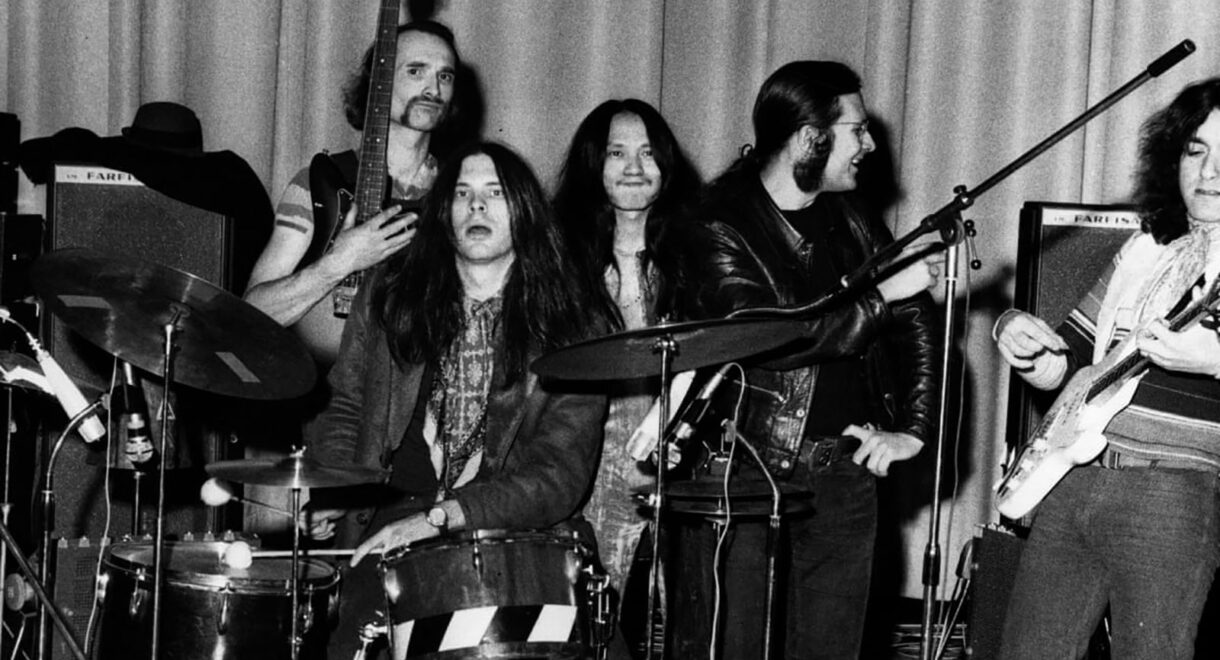Despite being more than a half-century old, the information delivered in Introduction to Hi-Fi, a 1960 book on the basics of sound reproduction and high fidelity listening at […]
The Cosmic Courier: Getting lost in German ‘Kosmische Musik’ with Julian Cope’s ‘Krautrocksampler’

In Krautrocksampler, his great book about German cosmic music, the musician, collector and writer Julian Cope describes the sensation of being a fan of Can, Neu!, Cluster, Amon Düül and other bands as their records were originally being released: “Albums were impossible to judge as they came out because they defied analysis alongside anything else but other Krautrock.”

Published in 1995 for the tiny British imprint Head Heritage, Krautrocksampler: One Head’s Guide to the Great Kosmische Music – 1968 Onwards helped corral a bunch of amazing music that had seldom before been gathered and analyzed as a whole. Despite the bounty of information and scholarship on the music now filling shelves and servers, the book was an epiphany in ’95, connecting so many dots and revealing so many must-haves that its publication helped cause a gold rush as fans began searching bins for records — many of them cutouts — by bands Cope touts within.
“When I decided to write this Krautrocksampler in September 1994 (CE),” Cope writes in his introduction, “it was surprising but not bewildering to discover that here was one of thee Great Untold Visionary Stories. I read of those beautiful German post-war artists and I cried my heart out. If I had been a young German in the 1960s I would have played Krautrock or died.”

Writes Cope of his endeavor:
This little history attempts to explain the reasons, but it can never truly explain the music of a whole youth-nation working out their blues. There was a fire burning in the souls of post-war German youth that somehow needed to be, not fanned, not put out, nor added to with petrol – but rather that fire needed to be allowed to burn. And burn it did. With an intensity that could have changed the very fabric of the West had it taken place in Britain or the USA. But that was not the nature of the fire, so it was never to be. Instead, we are left with he legacy of the daring German Youth-dance away from their recent past.
Krautrock is it – some of the most astonishing, evocative, heroic glimpses of Man at his Peak of Artistic Magic
– Julian Cope
The timing of its publication is notable. In the mid-1990s, a number of young bands were discovering and drawing inspiration from Kosmische Musik. Bands including Stereolab, Broadcast, Spacemen 3, Buffalo Daughter and Stereo Total were tapping ideas forged by Neu!, Can, and Harmonia to create new work. Stereolab, in fact, ripped entire riffs and melodies from their inspirations.
Cope drew his information from his vast collection of Krautrock records. He shot photos of the album covers, transcribed liner notes and credits, made connections between various musical philosophies and influences.
Writing about Karlheinz Stockhausen’s influence on young musicians, Cope described the composer’s experience of lecturing at UC-Berkeley in the late 1960s, “where he had lectured on experimental music. Among those at his seminars were the Grateful Dead’s Jerry Garcia and Phil Lesh, Grace Slick of Jefferson Airplane, and many other psychedelic musicians. Far from snubbing the new music, Stockhausen was seen at a Jefferson Airplane show at the Fillmore West and was quoted as saying that the music “… really blows my mind ”
Cope’s writing on Can is fantastic, especially his rundown of the band’s origin story:
Since 1965, two students of Stockhausen, Holger Czukay and Irmin Schmidt, had talked of forming a group together, a group that would both utilise and transcend ethnic, electronic experimental, and modern classical music. But now it was 1967 and Czukay was a music teacher. One of his students, Michael Karoli, had recently blown Czukay’s mind by playing him the Beatles’ “I Am the Walrus.” And it was soon after this, whilst listening to Jimi Hendrix, The Mothers of Invention and the Velvet Underground’s Banana LP one night, that Irmin Schmidt and Holger Czukay finally decided to take the plunge and include rock’n’roll elements in their group. Like Kraftwerk later, they were from an extremely academic background, and were uncomfortable yet fascinated by every aspect of rock ’n roll. But it was rock ’n roll’s sense of moment that thrilled them most of all.

Needless to say, their own thrills bore so many subsequent thrills that more than 50 years later Can has been cited as influences by nearly as many bands as the Beatles.
Though out of print, Krautrocksampler is available to read digitally at Archive.org. Cope offers a crucial list of his favorite records and delivers overviews of labels including Ohr, Brain and Sky. It’s a feast that will inevitably send you in search of new records.
Those in the New York area can hear eight essential Krautrock records during our weekly Monday dedicated listening session. Today from 2-5 p.m., we’ll travel to a profoundly deep musical moment in time by playing the following records:
Roedelius – Selbstportrait
Kraftwerk – Autobahn
Cluster – II
Cluster – Sowiesoso
La Düsseldorf- La Düsseldorf
Can – Tago Mago
Holger Czukay – Full Circle
Faust – Faust
Details:
Krautrock + the Berlin School
Where: 350 Hudson Street (enter on King)
When: Jan. 8, 2-5 p.m.










